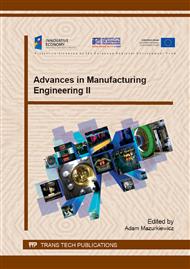p.95
p.101
p.107
p.112
p.118
p.124
p.130
p.136
p.142
New Generation Devices for Lubricant Consistency Testing
Abstract:
Plastic lubricants represent a large group of lubricants that are widely used. Structurally, they are complex colloidal systems and are included among non-Newtonian fluids. They consist of oil basestock, a selected thickener, and a set of improvers. A significant role in the spatial structure of lubricants is played by the intermolecular van der Waals forces between the major components, namely between the basestock and the thickener. However, the spatial structure of the thickener is largely maintained by intermolecular forces other than van der Waals forces, in particular: dipole-dipole force (Kesson effect), dipole-induced dipole attraction (Debye effect), and momentary dipole-induced dipole force (London effect). The result of these types of forces is an adequate lubricant structure, which is responsible for rheological properties and texture [1-3].
Info:
Periodical:
Pages:
118-123
Citation:
Online since:
August 2015
Authors:
Price:
Сopyright:
© 2015 Trans Tech Publications Ltd. All Rights Reserved
Share:
Citation:


